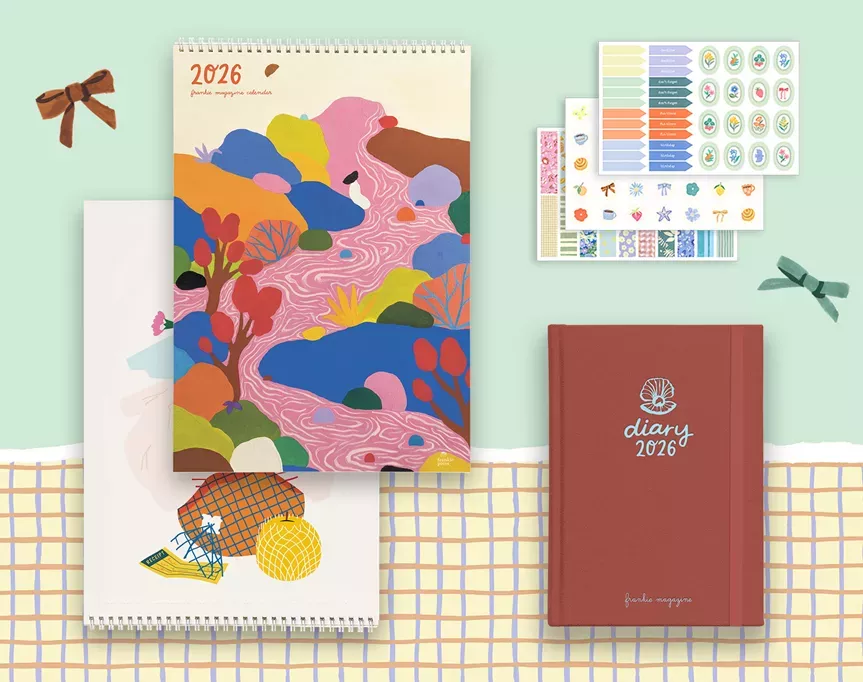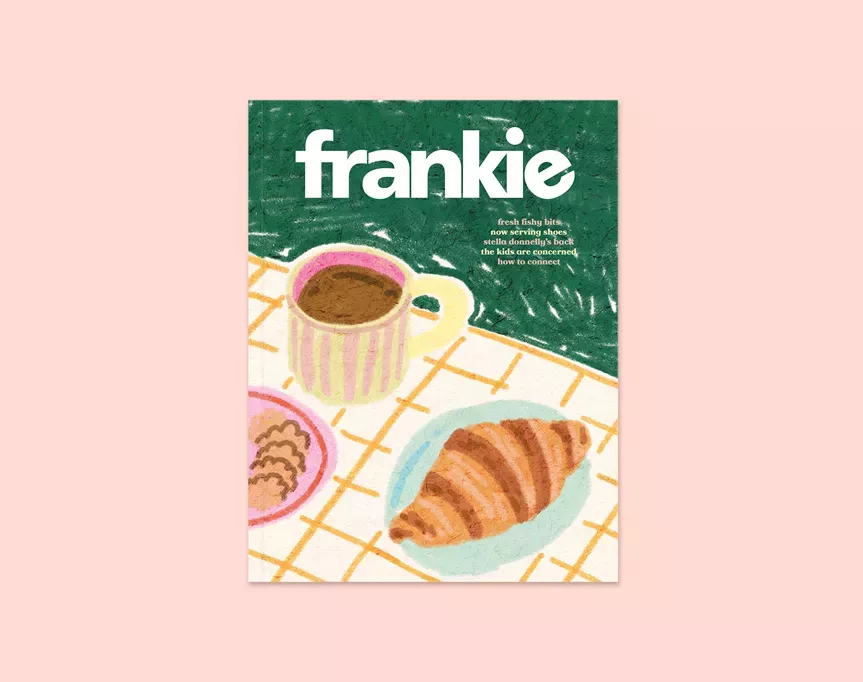a deep-dive into australia’s incredible milk-sharing community
In issue 122, writer Freya Bennett chats about how she encountered an intimate community of women sharing breastmilk to fellow mums.
Three days deep into my post-birth haze, exhausted from parenting a squalling newborn, I was told my baby girl, Alba, was losing too much weight and it seemed my boobs were to blame. Having had a breast reduction three years beforehand, I knew this was a possibility; however, I had been producing colostrum in the last few months of pregnancy, so naively thought that meant everything would be dandy. Alas, it wasn’t as simple as that – while I could make some milk, I wasn’t making enough.
So I began a strict feeding and pumping regime in an attempt to boost my supply, under the guidance of a lactation consultant. While I had an appointment every other day to weigh Alba and check our progress, it became clear to me she wasn’t getting enough milk. Unable to bear her hungry wails and while I continued trying to increase my production, I reached out to my local mums’ network to see if anyone had spare breastmilk. Two mums immediately offered their frozen surplus, and the first milk run was promptly organised. What followed this amazing act of generosity has been heart-explodingly beautiful.
Despite my three-hour pumping schedule, my milk supply didn’t increase, so as our first donation dwindled, I joined the Human Milk 4 Human Babies Facebook group and began to learn about the milk-sharing community. I saw posts from mothers of premature babies in the neonatal intensive care unit who were offering their extra milk, and from women travelling interstate who needed to pump while away. One mother, Lara from Queensland, posted her offering as “special Taylor Swift milk” as she was travelling to see the concert in Melbourne/Naarm. And for all the generous posts offering donations, there were many more requests from families in need: from mums like me who weren’t producing enough milk, to two-dad families, and heartbreaking requests from sick mums who had to stop breastfeeding to start treatments for cancer.
Most milk-sharing in Australia (and worldwide) is privately organised and relies on an honesty system – so, learning to ask the right questions of donors about their health, pumping and storage practices is of paramount importance. My partner and I weighed the risks and benefits of donor milk, chatting with our doctor and lactation consultant, and ultimately decided this was our preferred path forward. After posting my first milky request, I was humbled by the offerings. A young mum drove an hour with her three kids, including her nine-week-old baby, to deliver eight litres of milk to me as I couldn’t drive due to my C-section. A week later, her sister – unaware of the connection – delivered more milk while passing through town.
Offers continued to pour in and while my mum handled the local milk run, my in-laws helped by collecting milk from Melbourne (my sister-in-law dubbing herself our “milk mule”). Our regular freezer quickly filled up, so we invested in a chest freezer to accommodate all the donations. It felt rather poetic, given my chest wasn’t quite up to the task.
After a few months of collecting milk from all over Victoria, we were incredibly fortunate to have a local mum, Demi, offer to be our regular donor. Having donated with her first baby, Demi expected she’d have a surplus once her second arrived. She initially hoped to donate to hospital milk banks, but the distance meant it was impossible, so Demi found online milk-sharing communities. “Once I found out my excess milk could be put to feeding another gorgeous bubba, it was a no-brainer,” she says. I provide the breastmilk bags (and treats), and Demi provides the milk. Through her pumping routine, she bags about a litre a day, sharing 600mls of that with us – just about all Alba needs.
Milk-sharing isn’t new; cross-nursing and wet nursing have long been integral practices to baby nourishment. Cross-nursing often happened informally within communities when a mother needed a brief respite or had tragically passed away, and other nursing mothers would step in to provide nourishment for newborns. This communal sharing of breastfeeding duties was a vital form of support, ensuring that all infants – regardless of circumstance – received the sustenance they needed. Wet nursing was a practice where a lactating woman was hired to breastfeed another woman’s child, and was common from ancient times through to the 19th century. Unfortunately, the practice often involved complex social and ethical issues, including exploitation and the commodification of women’s bodies.
These particular practices dwindled following the invention of formula and bottles, but the sharing of breastmilk among communities hasn’t completely disappeared, according to Maternal and Infant Wellbeing Melbourne founder, GP and lactation consultant Dr Amber Hart. “Milk sharing has been around for centuries and has been gaining popularity again over the last few decades,” she says. While Dr Hart acknowledges that formula is an exceptional product, she says “it will never be as clever or as ‘tailor-made’ as breastmilk,” and believes investing in resources and funding milk banks is crucial. “There are so many women out there who have surplus milk and are more than happy to share. Facilitating this should be a priority,” she says. The New York Milk Bank, for example, is a not-for-profit milk bank that supplies tested and pasteurised milk to babies in need. And they’ve even got ‘Milk Riders’ – The Sirens Women’s Motorcycle Club delivers milk around the city, skilfully weaving through New York traffic to ensure timely deliveries.
In Australia, the Mother’s Milk Bank Charity in Brisbane/Magandjin is the only public milk bank, while others like the Mercy Health Breastmilk Bank in Melbourne/Naarm serve only premature and sick babies in hospital. For families seeking donor milk, community sharing is often the most accessible option.
According to Alexandra Shanks, a breastfeeding counsellor at the Australian Breastfeeding Association, when a baby can’t receive their own mother’s milk, “donor milk from another mum is the next best option.” Many families across Australia turn to donor milk for various reasons – adoption, fostering or supply issues. Shanks emphasises that “all babies have the right to receive breastmilk” and believes parents should have the choice to use donor milk, regardless of the reason.
While the ABA doesn’t directly facilitate milk-sharing, they provide information about organisations that do. “Parents need accurate information to enable them to make informed choices about how they feed their babies,” Shanks says, adding that education among health professionals is needed, too, so they can help parents weigh the relative risks of formula and donor milk. “We need society more broadly to understand the importance of breastfeeding and breastmilk, so that donor milk is more widely accepted, and more women donate."
The benefits of breastmilk can’t be dismissed, Shanks explains. “Breastmilk has the right mix of nutrients to support babies’ growth. It’s easy for them to digest and contains immune factors that help protect against gut, ear and respiratory infections.” Breastmilk is also packed with prebiotics and probiotics, creating a healthy gut microbiome that contributes to overall wellbeing. Thanks to the variety of milk Alba has received, our doctor and lactation consultant agree that she likely has a richly diverse gut microbiome. As a tummy-ache girl, this makes me very happy.
While this journey isn’t right for everyone, and each family’s choice is 100 per cent valid, donor milk has been the right path for us. To date, Alba has been nourished by at least 20 donors. This experience has been a powerful reminder of the global community of mothers and the amazing generosity of women, making our hearts (and freezer) overflow with love.
For more information, visit breastfeeding.asn.au and consult your medical professional.
This article was featured in frankie issue 122. To get your mitts on a copy, swing past the frankie shop, subscribe or visit one of our lovely stockists.












.jpg&q=80&w=316&c=1&s=1)













.jpg&q=80&w=316&c=1&s=1)










